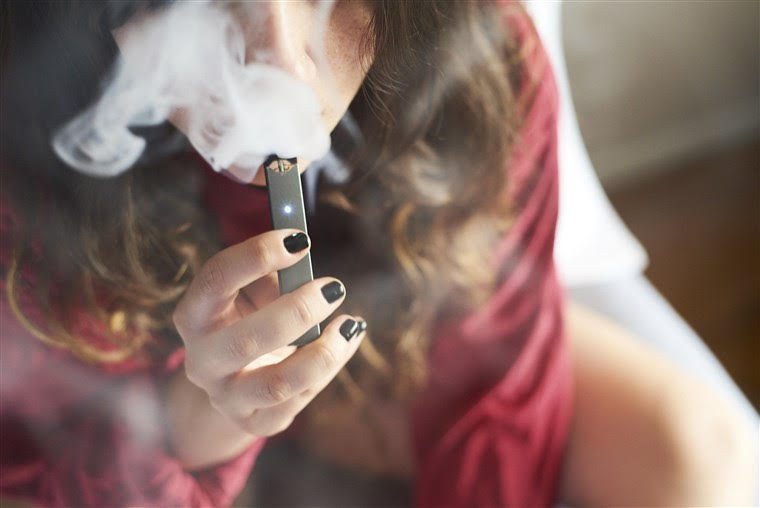EPIDEMIC: Vaping is continually growing nationally as one of the most popular trends and has taken up residence in the majority of schools.
By Roman McCree, Staff Writer
Over the past few years, vaping has quickly risen to the top of the list as one of the most popular trends in the world, and thus declared an epidemic for American youth. Although vaping has been available for a while, it most recently blew up in 2016 and only continued to grow as more and more students became addicted. Its alluring charm to social scenes and personal “release” allowed vaping to become habitual to many. According to surveys from the United States Food and Drug Administration (FDA), the most common tobacco product of 2017 was E-cigarettes, with 2.1 million students using it. While not all of these students may vape in school, vaping has nonetheless is a problem for schools around the nation. Over the years, many schools attempted to ban this activity to keep it off their campuses. Schools tried many tactics to crack down on vaping, such as limiting which bathrooms are open during class, but some have taken other more drastic steps. In 2018, Broadneck High School in Annapolis, Maryland removed the doors to nearly half of the bathrooms hoping to discourage students from vaping in the restrooms. While this seems like a possible solution to combat vaping on campus, the real issue at hand is figuring out a way to change the student’s perceptions. At the rapid rate that vape usage is continually increasing, is it reasonable to attempt to kill off this epidemic?
The FDA made multiple attempts to sway the youth away from vaping, but is it making an effect? In 2017, they launched a campaign titled “The Real Cost,” targeted at preventing youth usage of E-cigarettes. The campaign was released into the two places where it was believed teenagers spend most of their time: in school and online. They launched a series of commercials aiming to prevent teens from vaping by sharing statistics of what is inside vapes and even giving vaping a physical image, often portraying the vape as a parasite that is attacking the teen’s brain, creating drastic results on the body. Unfortunately, even sharing statistics of how a cartridge of vape is equal to about two to three of packs of cigarettes does not seem to sway the youth. What is so enticing about this activity to the American youth that even factually proven lethal results can not seem to sway them from vaping? Could it be peer pressure or how the vape flavors appeal to young people? Regardless of the cause, there seems to be little hope in stopping the epidemic.
Even after the multiple attempts made by schools, parents, and the government, nothing seems to be able to pull students out from this haze. These programs should still remain in place, but at what point should the attention be diverted to other problems at hand? Although from 2011 to 2017 the FDA reports a drop in the use of tobacco products, the number of students using vape seems to grow for every drop in a different tobacco product. So with each step towards ending the vape epidemic, there seems to be a step backwards in progress made. At the rate that this trend is growing, is it worth the effort to keep fighting against the epidemic that has covered America?

